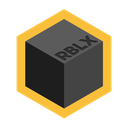-
 Bitcoin
Bitcoin $106,754.6083
1.33% -
 Ethereum
Ethereum $2,625.8249
3.80% -
 Tether USDt
Tether USDt $1.0001
-0.03% -
 XRP
XRP $2.1891
1.67% -
 BNB
BNB $654.5220
0.66% -
 Solana
Solana $156.9428
7.28% -
 USDC
USDC $0.9998
0.00% -
 Dogecoin
Dogecoin $0.1780
1.14% -
 TRON
TRON $0.2706
-0.16% -
 Cardano
Cardano $0.6470
2.77% -
 Hyperliquid
Hyperliquid $44.6467
10.24% -
 Sui
Sui $3.1128
3.86% -
 Bitcoin Cash
Bitcoin Cash $455.7646
3.00% -
 Chainlink
Chainlink $13.6858
4.08% -
 UNUS SED LEO
UNUS SED LEO $9.2682
0.21% -
 Avalanche
Avalanche $19.7433
3.79% -
 Stellar
Stellar $0.2616
1.64% -
 Toncoin
Toncoin $3.0222
2.19% -
 Shiba Inu
Shiba Inu $0.0...01220
1.49% -
 Hedera
Hedera $0.1580
2.75% -
 Litecoin
Litecoin $87.4964
2.29% -
 Polkadot
Polkadot $3.8958
3.05% -
 Ethena USDe
Ethena USDe $1.0000
-0.04% -
 Monero
Monero $317.2263
0.26% -
 Bitget Token
Bitget Token $4.5985
1.68% -
 Dai
Dai $0.9999
0.00% -
 Pepe
Pepe $0.0...01140
2.44% -
 Uniswap
Uniswap $7.6065
5.29% -
 Pi
Pi $0.6042
-2.00% -
 Aave
Aave $289.6343
6.02%
How does DeFi work?
Decentralized finance (DeFi), an emerging financial system built on the blockchain, empowers individuals with unprecedented access to financial services by eliminating the need for traditional intermediaries.
Oct 05, 2024 at 08:35 am
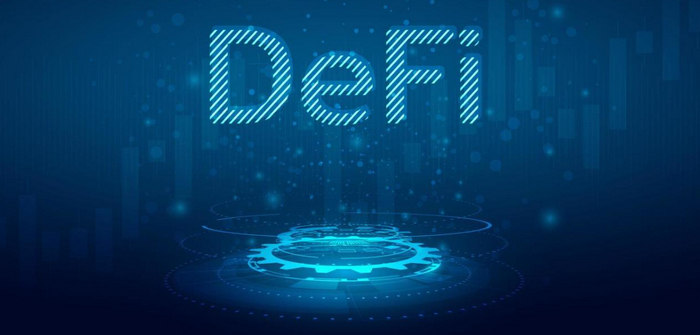
How DeFi Works
Decentralized finance (DeFi) is a rapidly growing financial ecosystem that operates on the blockchain. Unlike traditional finance, DeFi does not rely on central authorities like banks or governments. Instead, it uses smart contracts, which are self-executing agreements that run on the blockchain.
How does DeFi work?
- Create a wallet: The first step to using DeFi is to create a cryptocurrency wallet. This wallet will store your digital assets and allow you to interact with DeFi applications.
- Fund your wallet: Once you have created a wallet, you need to fund it with cryptocurrency. You can purchase cryptocurrency from exchanges like Coinbase or Binance, or you can transfer it from another wallet.
- Connect to a DeFi application: Once your wallet is funded, you can connect it to a DeFi application. There are many different DeFi applications available, each with its own set of features.
- Use the DeFi application: Once you have connected to a DeFi application, you can use its features to manage your digital assets. For example, you can lend or borrow cryptocurrency, participate in liquidity pools, or trade cryptocurrencies.
- Withdraw your funds: When you are finished using a DeFi application, you can withdraw your funds to your wallet.
Benefits of DeFi
- Decentralized: DeFi does not rely on central authorities, which makes it more resistant to censorship and manipulation.
- Transparent: All transactions on the blockchain are public, which makes DeFi more transparent than traditional finance.
- Accessible: DeFi is accessible to anyone with an internet connection.
- Global: DeFi can be used by people anywhere in the world.
Risks of DeFi
- Smart contract risk: Smart contracts are complex programs, and there is always the risk of a bug or vulnerability that could be exploited.
- Volatility: The price of cryptocurrency can be volatile, which could result in losses for DeFi users.
- Security risks: DeFi applications are often targets for hackers, so it is important to take steps to protect your funds.
Overall, DeFi is a new and exciting financial ecosystem with the potential to revolutionize the way we interact with money. However, it is important to be aware of the risks involved before using DeFi applications.
Disclaimer:info@kdj.com
The information provided is not trading advice. kdj.com does not assume any responsibility for any investments made based on the information provided in this article. Cryptocurrencies are highly volatile and it is highly recommended that you invest with caution after thorough research!
If you believe that the content used on this website infringes your copyright, please contact us immediately (info@kdj.com) and we will delete it promptly.
- Bitcoin, Hedge Funds, and Eric Semler: A Wall Street Waltz?
- 2025-06-21 10:45:11
- Hack token plunges amidst hack SuSpicions: a Peckshield Alert
- 2025-06-21 10:25:11
- Crypto News, June 21, 2025: Stories You Might Have Missed
- 2025-06-21 10:45:11
- Filecoin, XRP, BlockDAG: Navigating Crypto's Shifting Sands
- 2025-06-21 11:05:11
- Kaspa Price Prediction, June 21: Will KAS Break Below Support?
- 2025-06-21 10:51:51
- Gaming Tokens, Social Activity, and the Rise of APE & FLOKI: Who's Winning the Game?
- 2025-06-21 10:30:12
Related knowledge
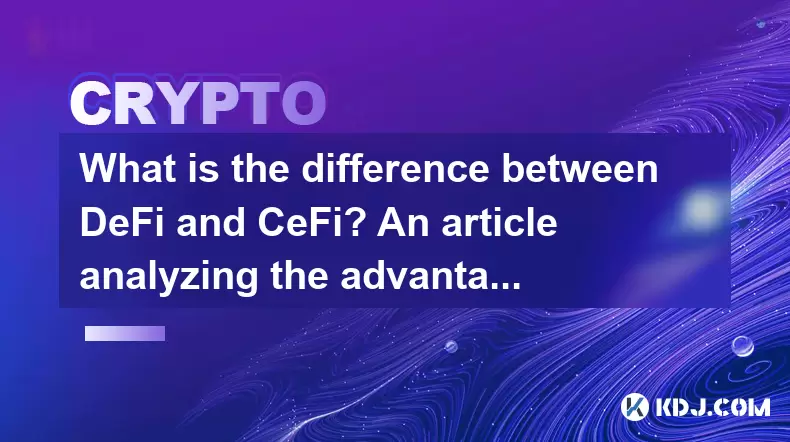
What is the difference between DeFi and CeFi? An article analyzing the advantages and disadvantages of both
Jun 13,2025 at 03:57am
Understanding the Foundations of DeFi and CeFiTo fully grasp the difference between DeFi (Decentralized Finance) and CeFi (Centralized Finance), it’s essential to understand their foundational structures. DeFi operates on blockchain technology, primarily using smart contracts to execute financial services without intermediaries. In contrast, CeFi platfo...
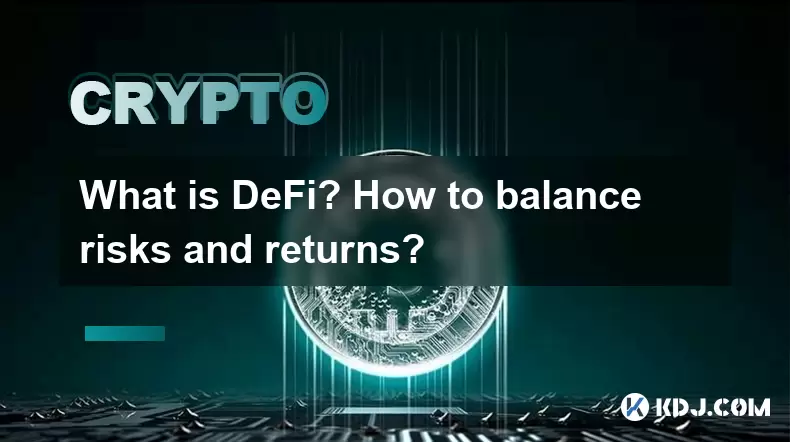
What is DeFi? How to balance risks and returns?
May 31,2025 at 12:22pm
What is DeFi? How to Balance Risks and Returns? Decentralized Finance, commonly known as DeFi, represents a revolutionary shift in the financial ecosystem, leveraging blockchain technology to create an open, permissionless, and transparent financial service network. Unlike traditional finance, which relies on centralized institutions like banks, DeFi op...
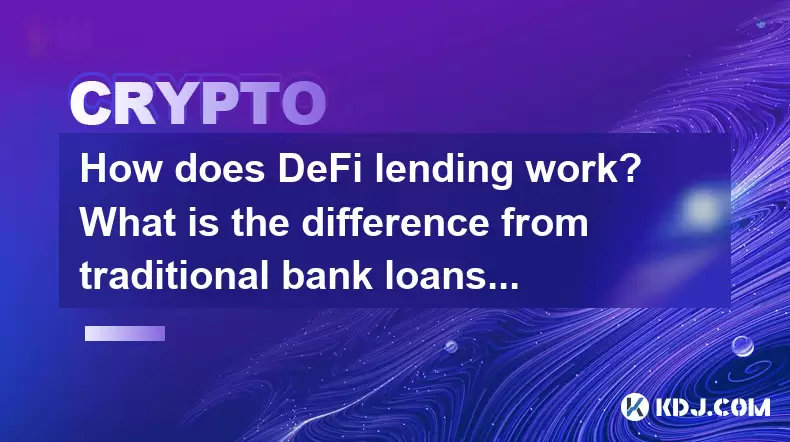
How does DeFi lending work? What is the difference from traditional bank loans?
May 29,2025 at 05:36pm
Introduction to DeFi LendingDeFi lending, or decentralized finance lending, represents a revolutionary shift in the way borrowing and lending are conducted. Unlike traditional bank loans, DeFi lending operates on blockchain technology, offering a decentralized, transparent, and often more accessible approach to finance. This article will explore the mec...
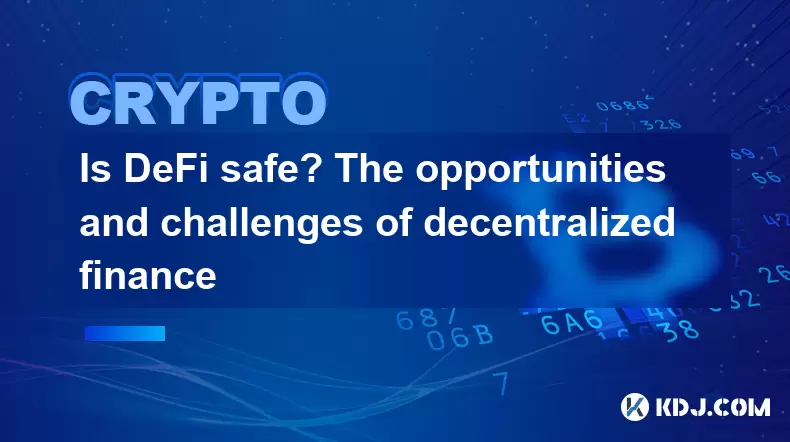
Is DeFi safe? The opportunities and challenges of decentralized finance
May 27,2025 at 02:28pm
Decentralized Finance, commonly known as DeFi, has revolutionized the financial landscape by offering a range of financial services without the need for traditional intermediaries like banks. As with any innovative technology, the question of safety is paramount. This article delves into the opportunities and challenges that come with DeFi, providing a ...
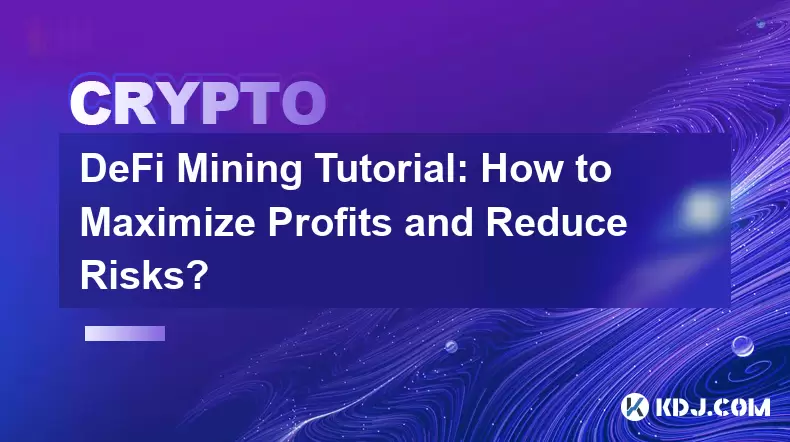
DeFi Mining Tutorial: How to Maximize Profits and Reduce Risks?
May 27,2025 at 07:42am
DeFi, or Decentralized Finance, has opened up a new world of opportunities for crypto enthusiasts looking to maximize their profits through various mining strategies. However, with great potential comes significant risk. This tutorial aims to guide you through the process of engaging in DeFi mining while focusing on maximizing profits and reducing risks...
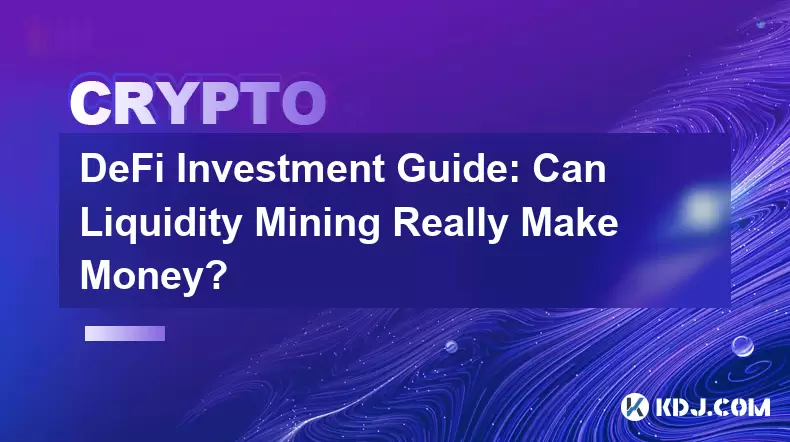
DeFi Investment Guide: Can Liquidity Mining Really Make Money?
May 28,2025 at 10:18am
Introduction to Liquidity Mining in DeFiLiquidity mining has emerged as a popular method for earning passive income within the decentralized finance (DeFi) space. This process involves users providing liquidity to decentralized exchanges or lending platforms in exchange for rewards, often in the form of the platform's native tokens. But the question on ...

What is the difference between DeFi and CeFi? An article analyzing the advantages and disadvantages of both
Jun 13,2025 at 03:57am
Understanding the Foundations of DeFi and CeFiTo fully grasp the difference between DeFi (Decentralized Finance) and CeFi (Centralized Finance), it’s essential to understand their foundational structures. DeFi operates on blockchain technology, primarily using smart contracts to execute financial services without intermediaries. In contrast, CeFi platfo...

What is DeFi? How to balance risks and returns?
May 31,2025 at 12:22pm
What is DeFi? How to Balance Risks and Returns? Decentralized Finance, commonly known as DeFi, represents a revolutionary shift in the financial ecosystem, leveraging blockchain technology to create an open, permissionless, and transparent financial service network. Unlike traditional finance, which relies on centralized institutions like banks, DeFi op...

How does DeFi lending work? What is the difference from traditional bank loans?
May 29,2025 at 05:36pm
Introduction to DeFi LendingDeFi lending, or decentralized finance lending, represents a revolutionary shift in the way borrowing and lending are conducted. Unlike traditional bank loans, DeFi lending operates on blockchain technology, offering a decentralized, transparent, and often more accessible approach to finance. This article will explore the mec...

Is DeFi safe? The opportunities and challenges of decentralized finance
May 27,2025 at 02:28pm
Decentralized Finance, commonly known as DeFi, has revolutionized the financial landscape by offering a range of financial services without the need for traditional intermediaries like banks. As with any innovative technology, the question of safety is paramount. This article delves into the opportunities and challenges that come with DeFi, providing a ...

DeFi Mining Tutorial: How to Maximize Profits and Reduce Risks?
May 27,2025 at 07:42am
DeFi, or Decentralized Finance, has opened up a new world of opportunities for crypto enthusiasts looking to maximize their profits through various mining strategies. However, with great potential comes significant risk. This tutorial aims to guide you through the process of engaging in DeFi mining while focusing on maximizing profits and reducing risks...

DeFi Investment Guide: Can Liquidity Mining Really Make Money?
May 28,2025 at 10:18am
Introduction to Liquidity Mining in DeFiLiquidity mining has emerged as a popular method for earning passive income within the decentralized finance (DeFi) space. This process involves users providing liquidity to decentralized exchanges or lending platforms in exchange for rewards, often in the form of the platform's native tokens. But the question on ...
See all articles

















